本文由 Studio Jencquel 授权mooool发表,欢迎转发,禁止以mooool编辑版本转载。
Thank Studio Jencquel for authorizing the publication of the project on mooool, Text description provided by Studio Jencquel.
Studio Jencquel:Rumah Fajar,在印尼语中意为“黎明之屋”,是对传统巴厘长屋建筑的一种现代诠释。
Studio Jencquel:Rumah Fajar, which means “The House of Dawn” in Bahasa Indonesia, is a modern architectural interpretation of a traditional Balinese longhouse bale agung.
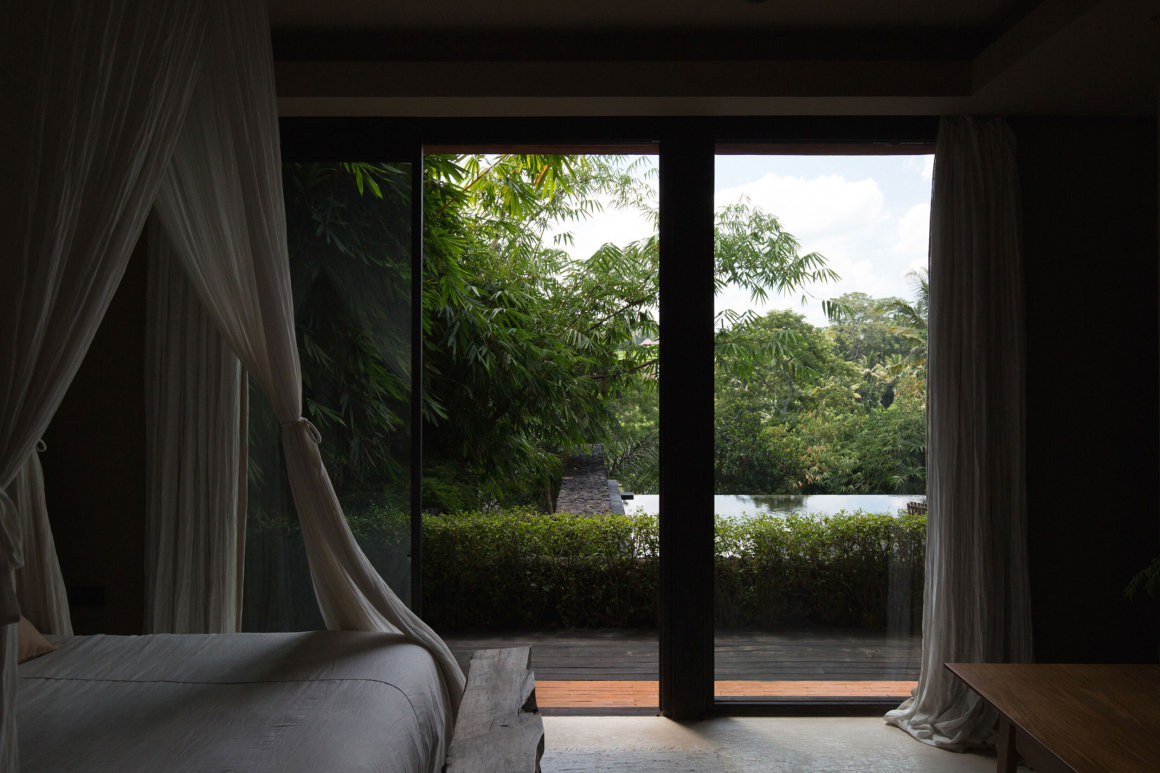
该住宅拥有巴厘岛最神圣的火山Gunung Agung的壮观景色,加上其因地制宜的建筑设计和材料选择,它已完全沉浸在当地的自然语境中。
Boasting spectacular views of Bali’s most sacred volcano Gunung Agung, the home is steeped in the local vernacular through its design and choice of materials.
Studio Jencquel于2017年8月开始建造这个项目,几乎与Gunung Agung火山喷发同时进行,两年后正式完工。其中大量使用的火山石元素便代表了其设计寓意,让火山和“亭子”相融互生。
Studio Jencquel began building in August 2017 — simultaneous with the eruption of Gunung Agung — and finished construction two years later in August 2019. Abundant use of volcanic stone represents an allegorical element of the completed design, entwining the great volcano and the “great pavilion” in its shadow.

建筑无缝地依偎在郁郁葱葱的山坡上,面对着冉冉升起的太阳,拥有4间豪华卧室的Rumah Fajar呈现出了一个并不那么简陋的蜗居之所。
Nestled seamlessly into a lush hillside and facing the rising sun, the luxurious 4-bedroom Rumah Fajar presents a humble abode that is not so humble, after all.

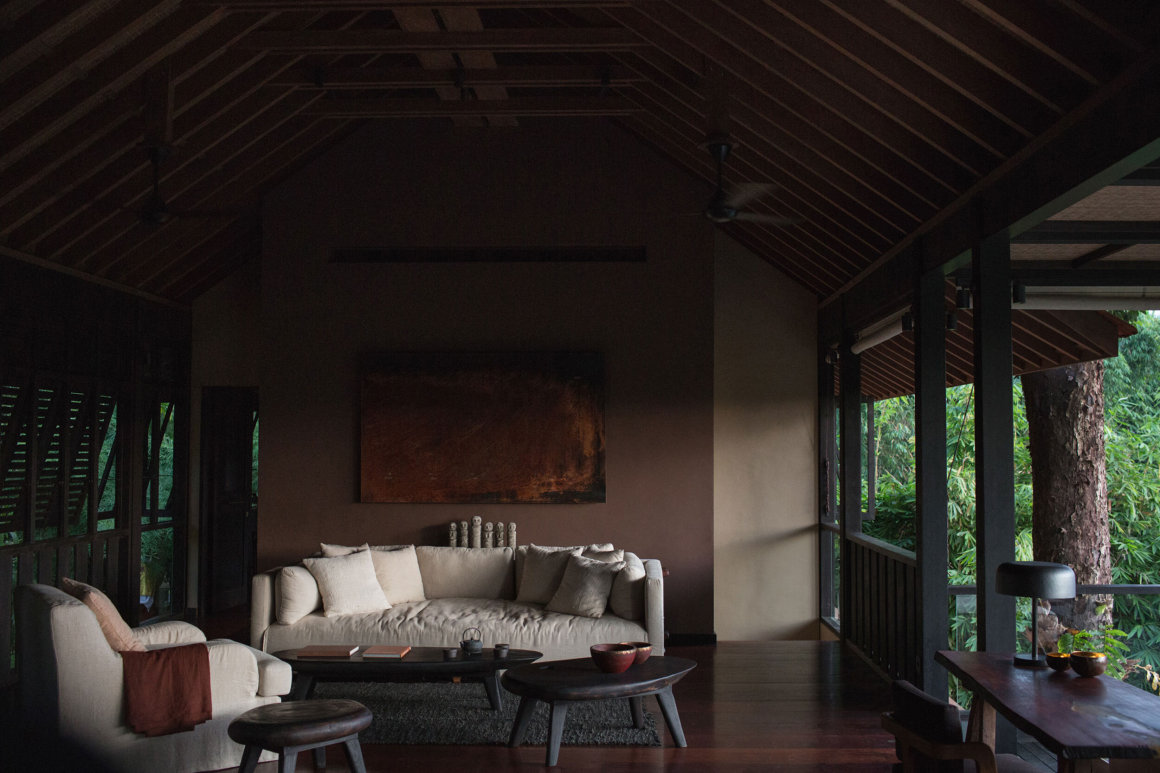
通过一扇朴实传统的angkull -angkul的巴厘小门进入空间,Men Brayut的双门守护雕像分立在当地陶土砖门的两侧,以力量、生育、和谐和繁荣祝福所有通过的人。
Entering the space through a small, unpretentious Balinese door known traditionally as angkul-angkul , twin gate guardian statues known as Men Brayut sit on either side upon the local terracotta brick gate, blessing all who pass with strength, fertility, harmony, and prosperity.
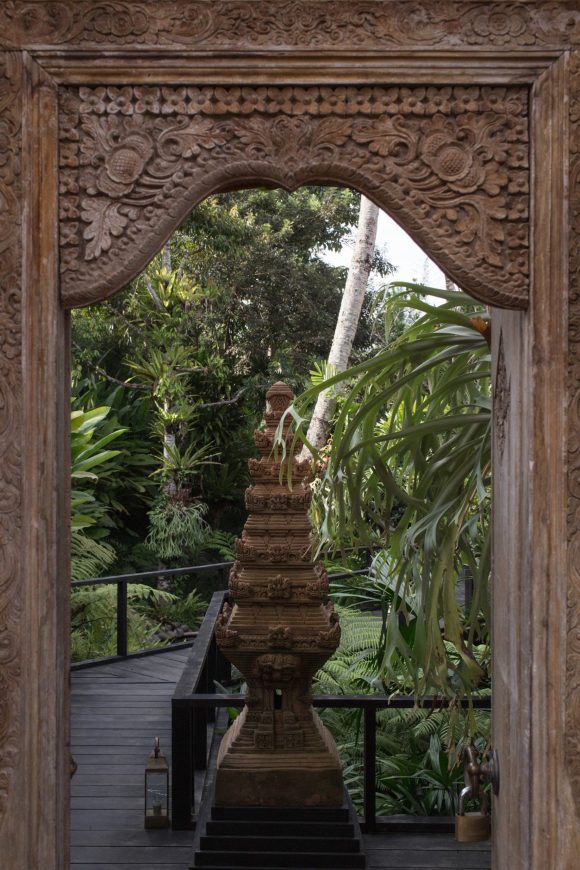
门槛后面的candi(神殿或寺庙),在这里扮演着“灵”的角色,这也是巴厘岛家庭入口处常见的障碍物,旨在转移和迷惑不受欢迎的客人或幽灵。
Past the threshold lies a candi (a shrine or temple), here playing the role of aling-aling , an obstacle often seen in the entrance to Balinese homes intended to deflect and confuse unwanted guests or spirits.
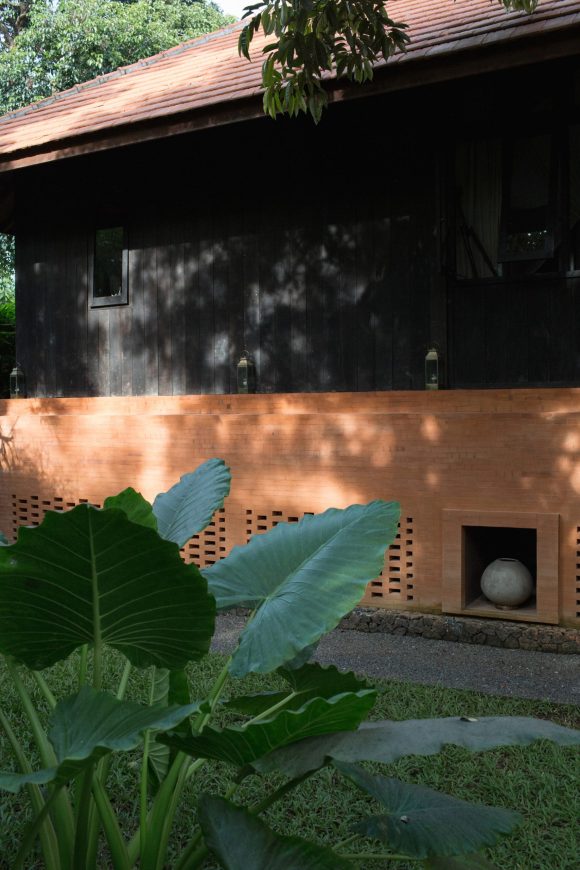
再通过一座盘旋在大锦鲤池塘上方的蜿蜒小桥进入住宅,这条曲折的道路不仅是为了迷惑神灵,也是为了给人一种融入树屋的感觉,有一种城堡般的保护感。
The house is accessed by a sinuous bridge hovering above a large koi pond; a zigzag path designed not only to confuse spirits, but to give one the elevated sense of entering a tree house with a castle-like feeling of protection.
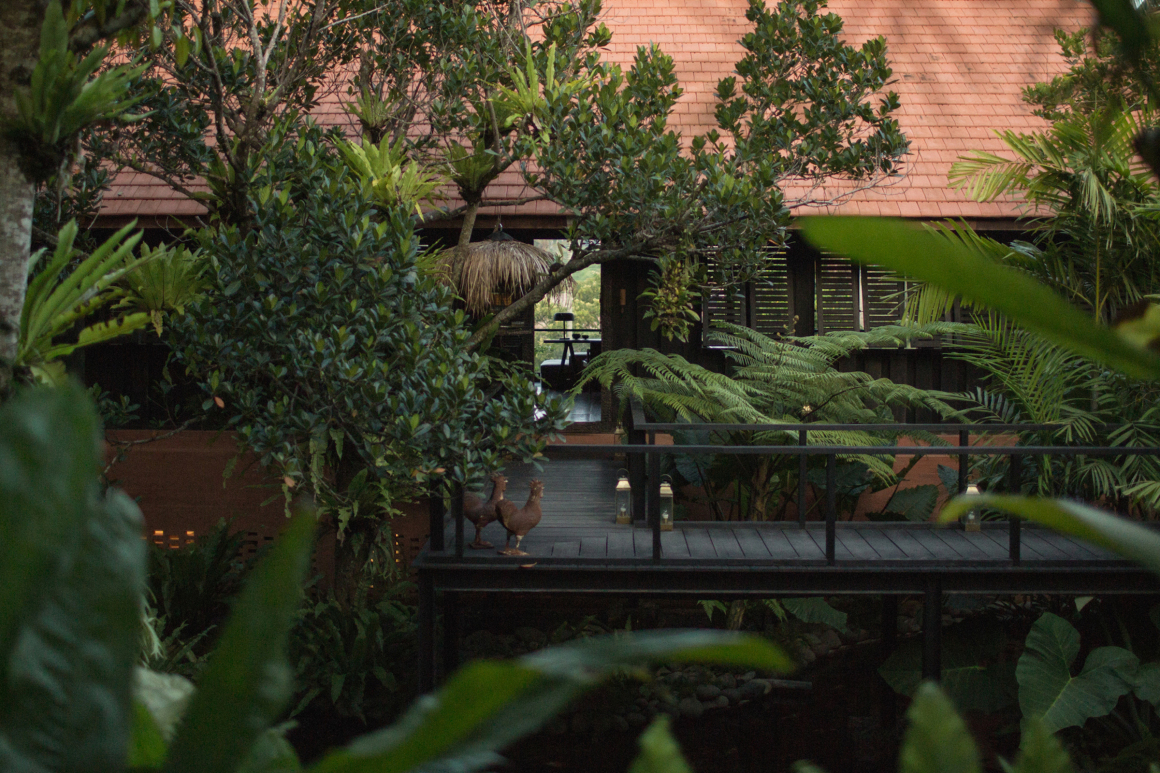

在翠绿的热带花园中,有椰子树、蕨类植物、太阳花、散发着巧克力香味的兰花,还有榴莲、面包果和红毛丹等果树,这趟植物遐想之旅,多彩缤纷,最后在大门处达到高潮。
Ensconced among a verdant tropical garden of coconut palms, tree ferns, heliconias, orchids that emanate a whiff of chocolate — along with fruit-bearing trees such as durian, breadfruit, and rambutan — this journey into botanical reverie culminates at the main entrance door.



在外面,我们可以看到古农·阿贡(Gunung Agung)和传统的巴厘岛生活方式是如何影响鲁玛·法贾尔(Rumah Fajar)住宅设计的。这座房子很好地融入了山坡上的野生自然环境,很大程度上是因为只结合了两种主要材料。一种是Bata Tulikup,来自巴厘岛Tulikup村传统的陶瓦砖;另一种是用日本烧制杉木板的炭化铁木。
From the outside, we see how Gunung Agung and traditional Balinese living inform the design of Rumah Fajar. The house blends into its wild natural setting along the hillside in great part due to the combination of only two dominant materials — Bata Tulikup , a Balinese terracotta brick from Tulikup village; and charred ironwood following Japanese techniques of Shou-Sugi-Ban.
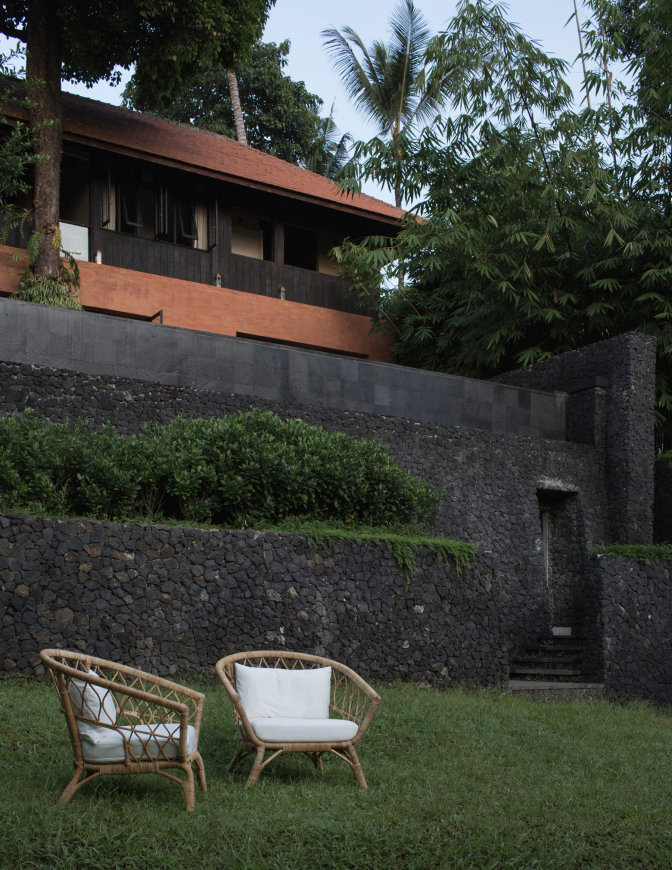
“Bale agung m”的意思是“华丽的亭子”,在这里,住宅景亭被抬高在一个细长的砖“平台”上,由此创造了一个由铁木、砖和神圣火山主领的特色外部景观——所有这些都是在火中破土重生的力量和美丽。
Bale agung m eans “great pavilion”, and here the great m ain pavilion of the house is elevated upon an elongated brick “podium”. This creates an exterior view ruled by ironwood, brick, and the sacred volcano — all reborn from earth with strength and beauty in fire.


在建造房屋的主框架时,木屋顶结构选用了毫米精度的钢结构安装而成,因为这样可以在地震时保持最高的耐力。工字钢以类似于传统巴厘岛长屋中的木柱的方式放置在平面图上,强化了现代民居的设计概念。
In creating the main frame of the house, a steel structure was designed to saddle the timber roof structure to a millimeter precision; and to perform with the highest degree of endurance in case of an earthquake. H-beams are positioned on the floor plan in a similar fashion to the timber pillars found in the traditional Balinese longhouse, reinforcing the idea of a modern vernacular.
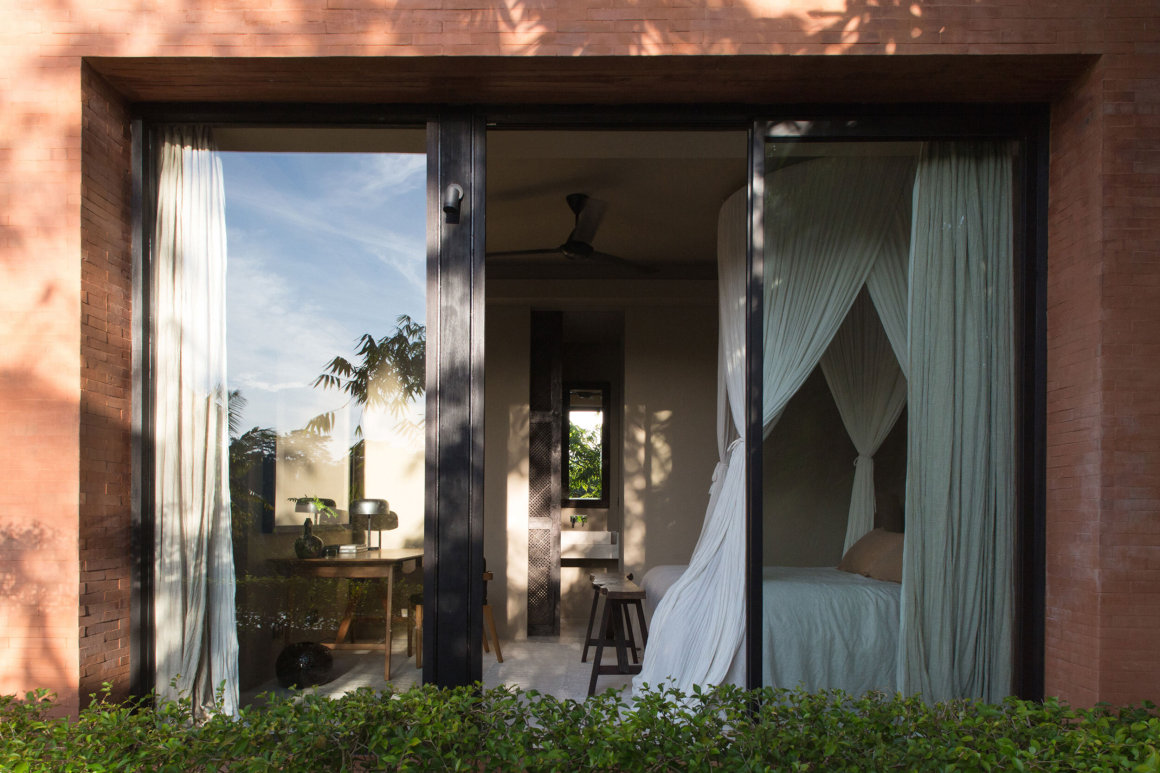
住宅整体设计是开放的,通过交叉通风保证充足的气流,同时Maximilian Jencquel设计的景观和花园为住宅提供了充足的阴凉和微风空间。
The overall design is meant to be open and not boxed in, with ample air flow through cross-ventilation. The landscaping and gardens, designed by Maximilian Jencquel, supplement the home with cooling shade and plenty of space for gentle breezes to pass through.

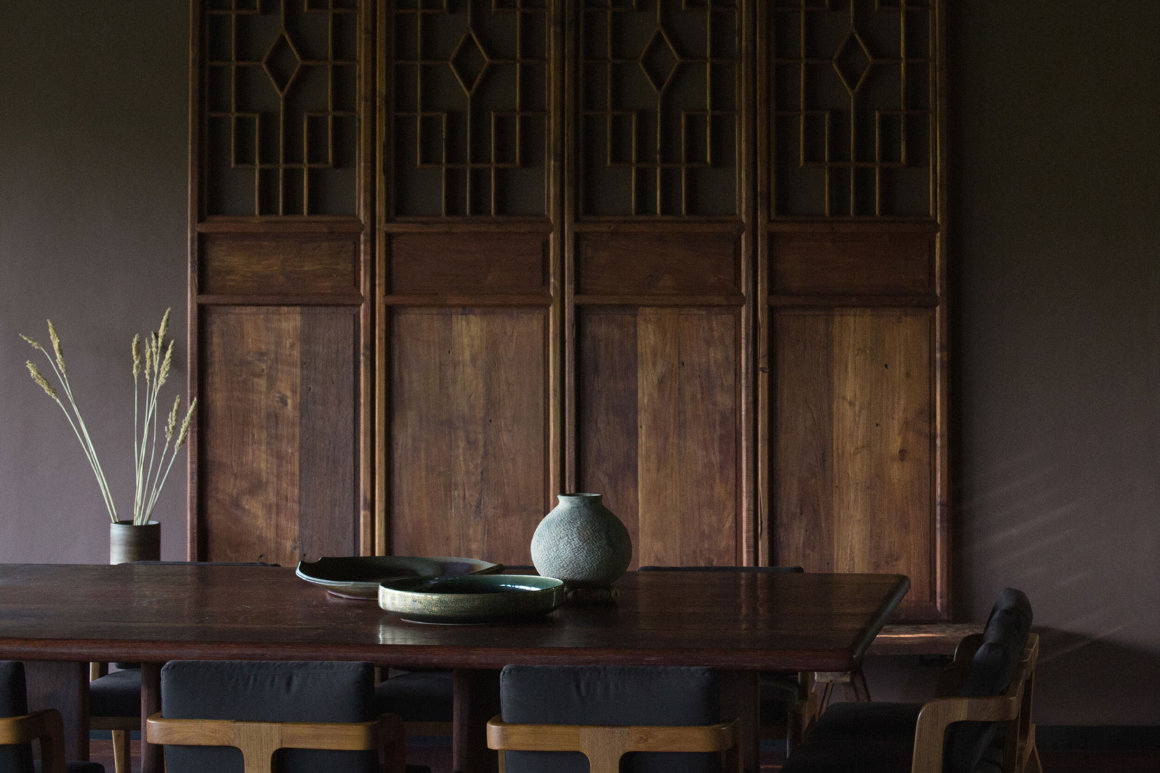
▼总平面图 Site Plan
▼住宅首层平面图 Ground Floor
▼住宅二层平面图 First Floor
▼住宅立面图 Facade
▼住宅剖面图 Section
项目名称:Rumah Fajar
设计公司:Studio Jencquel
公司网址:https://www.studiojencquel.com
社交媒体账户:studio_jencquel
联系邮箱:contact@studiojencquel.com
公司地点:巴厘岛
完成:2019年
总建筑面积:500平方米
项目位置:巴厘岛
首席建筑师:Maximilian Jencquel
图片:Tommaso Riva, Maximilian Jencquel
Project Name: Rumah Fajar
Office Name: Studio Jencquel
Office Website: https://www.studiojencquel.com
Social Media Accounts: studio_jencquel
Contact e-mail: contact@studiojencquel.com
Firm Location: Bali
Completion Year: 2019
Gross Built Area: 500㎡
Project Location: Bali
Lead Architects: Maximilian Jencquel
Photo Credits: Tommaso Riva, Maximilian Jencquel
更多 Read more about: Studio Jencquel


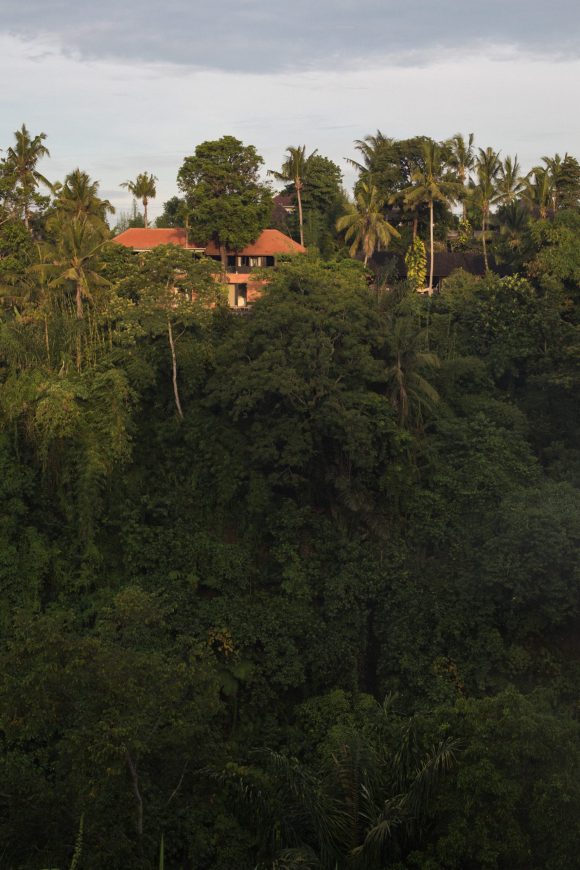

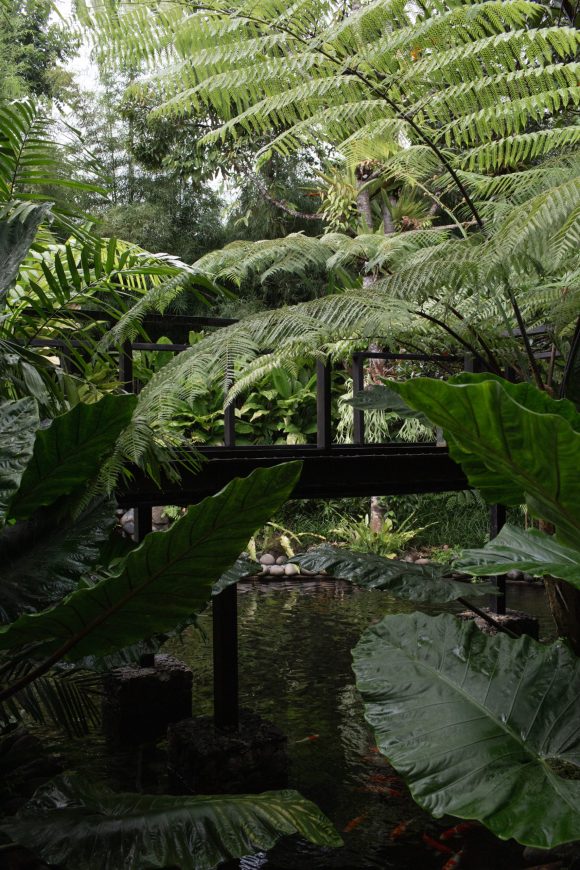
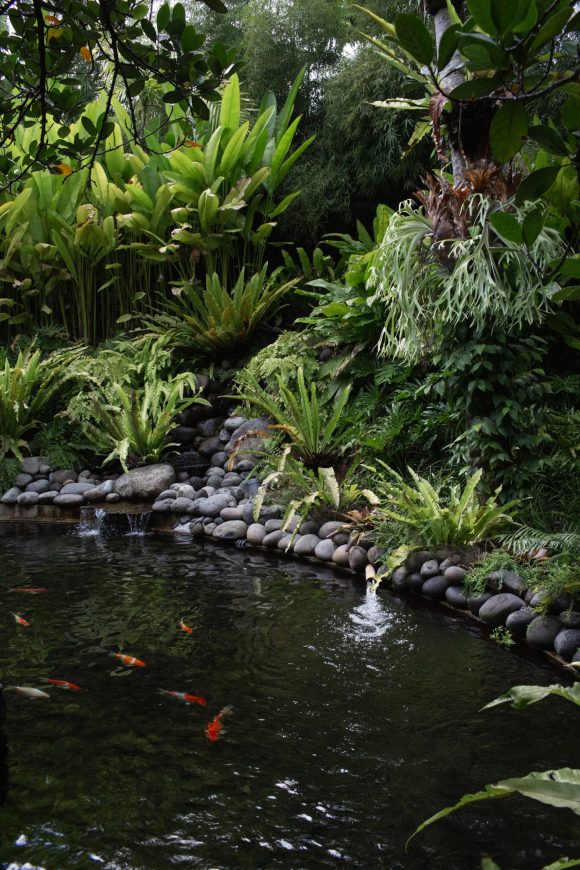

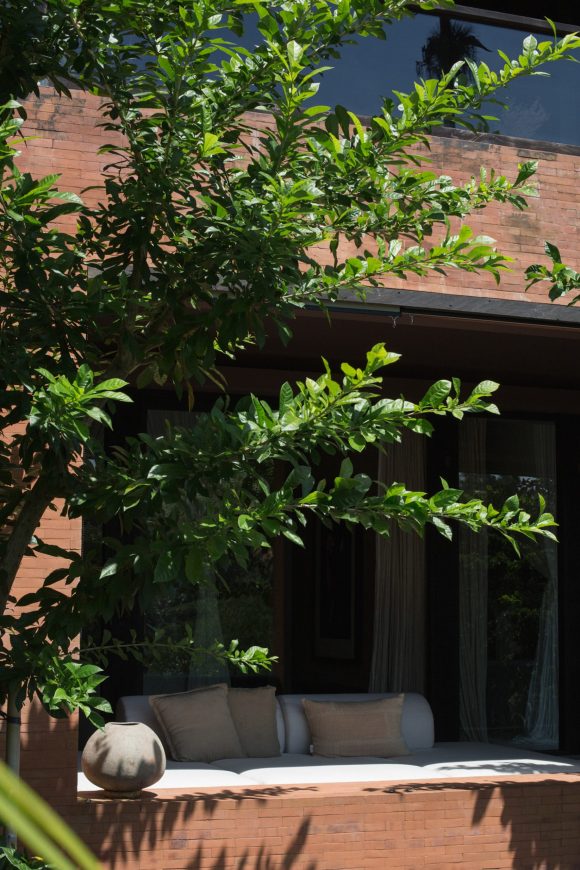
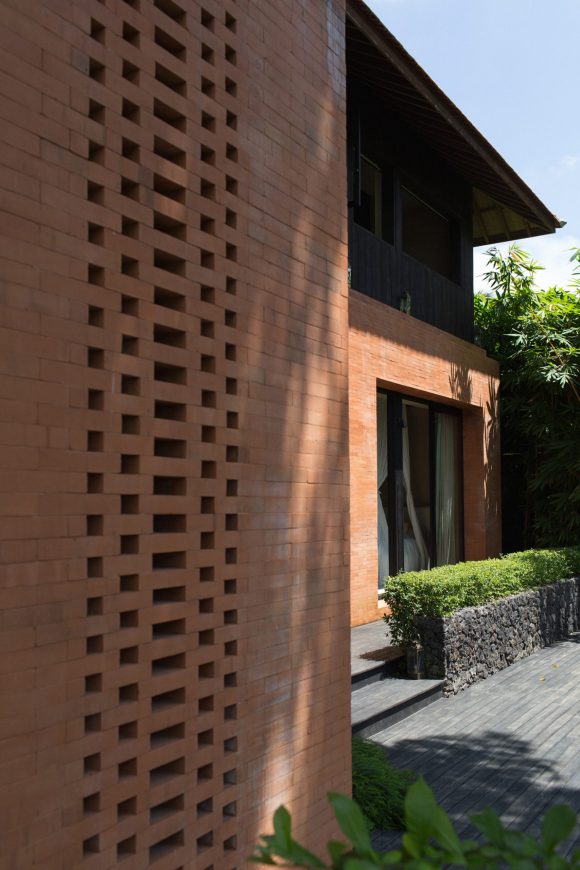
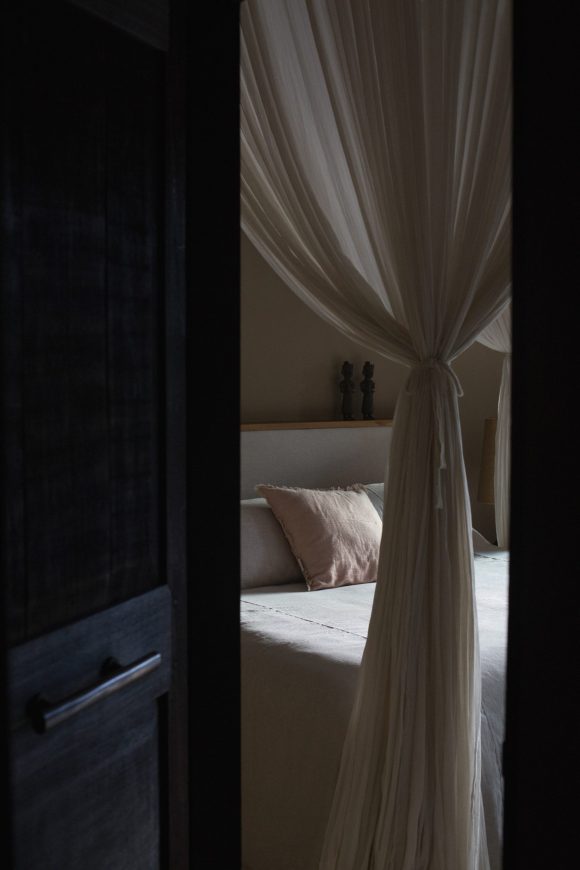

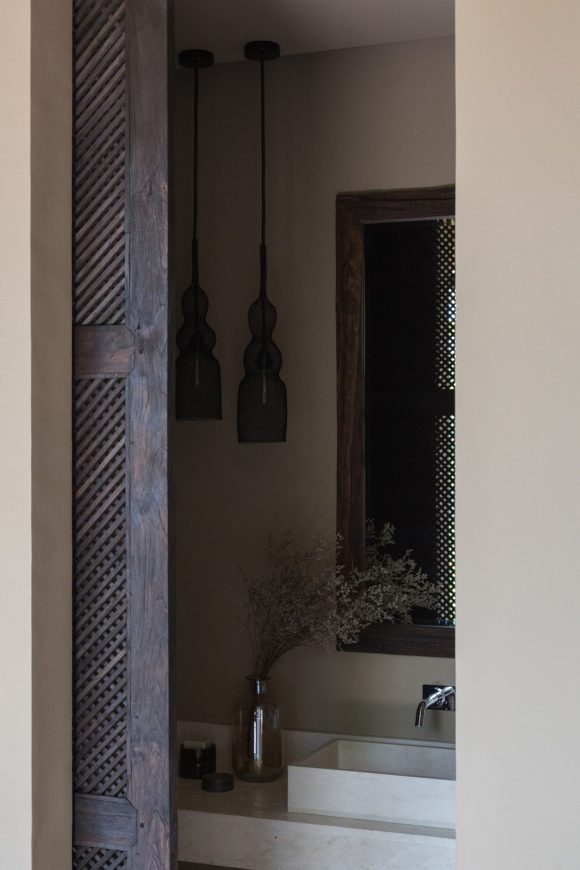
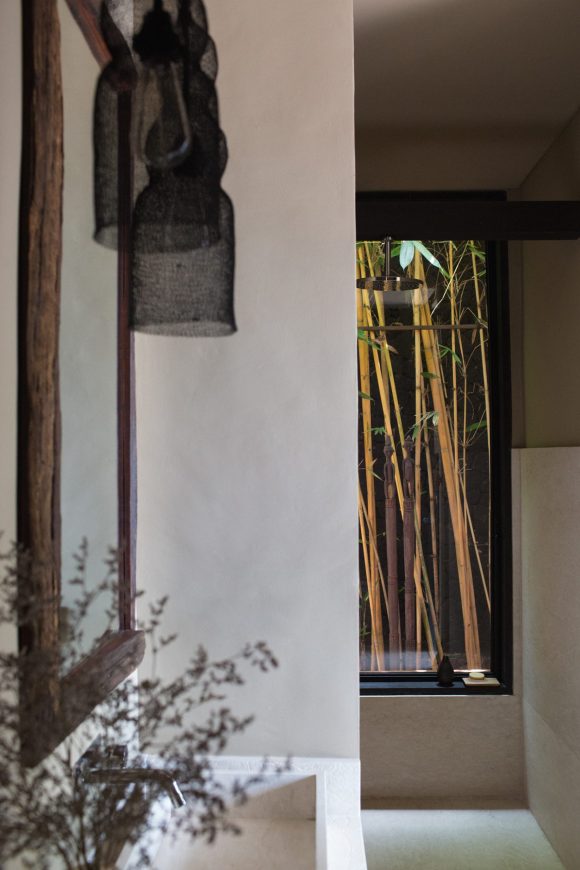

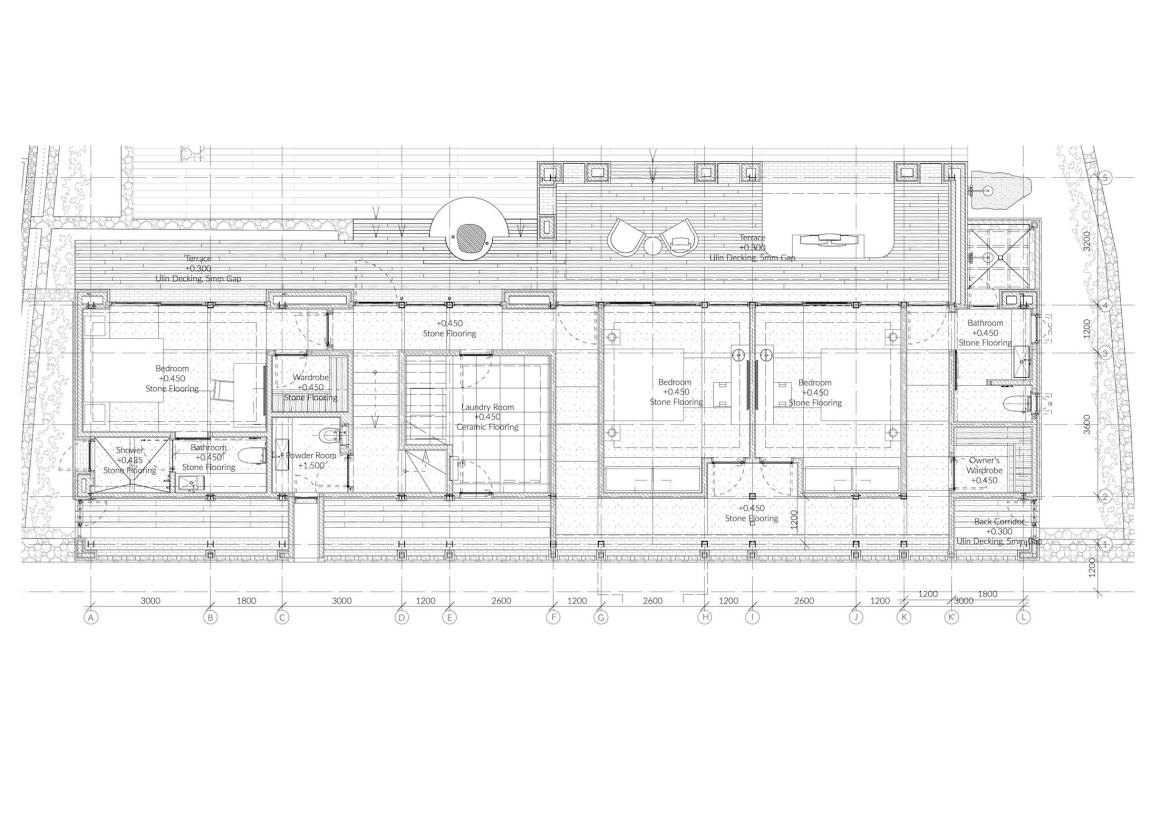
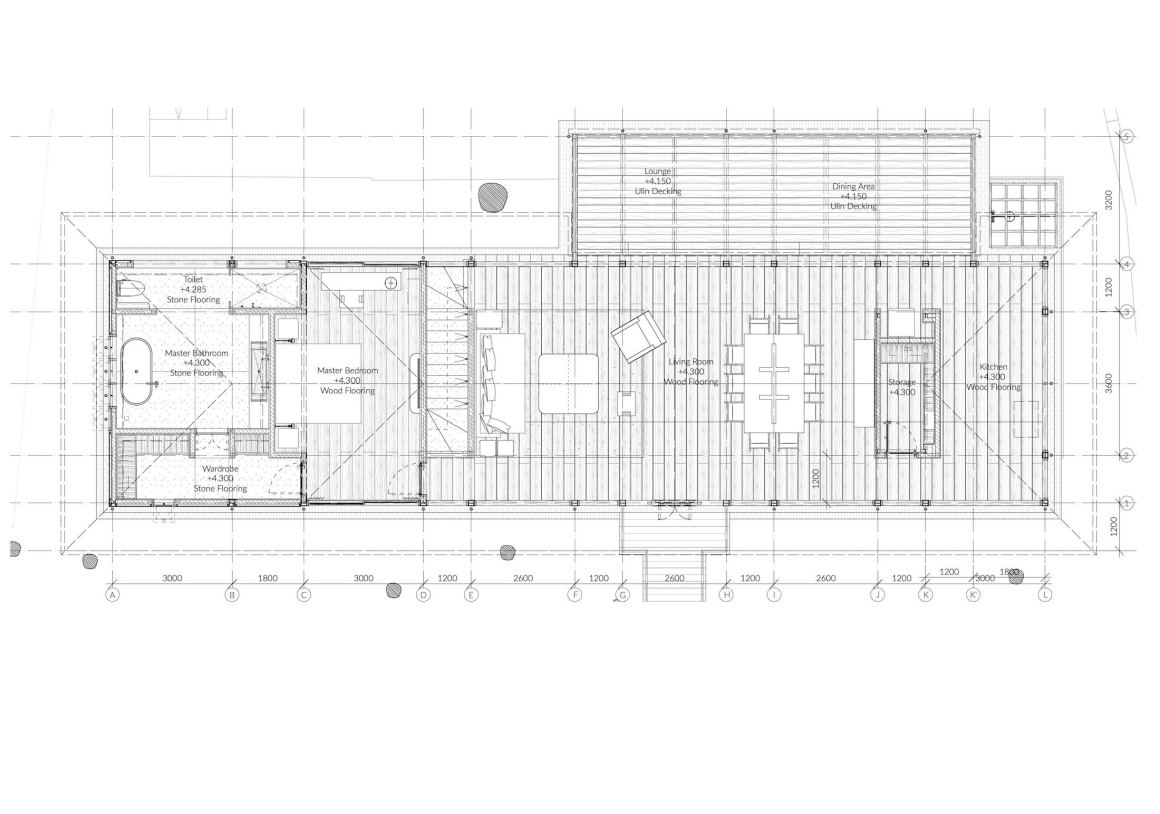

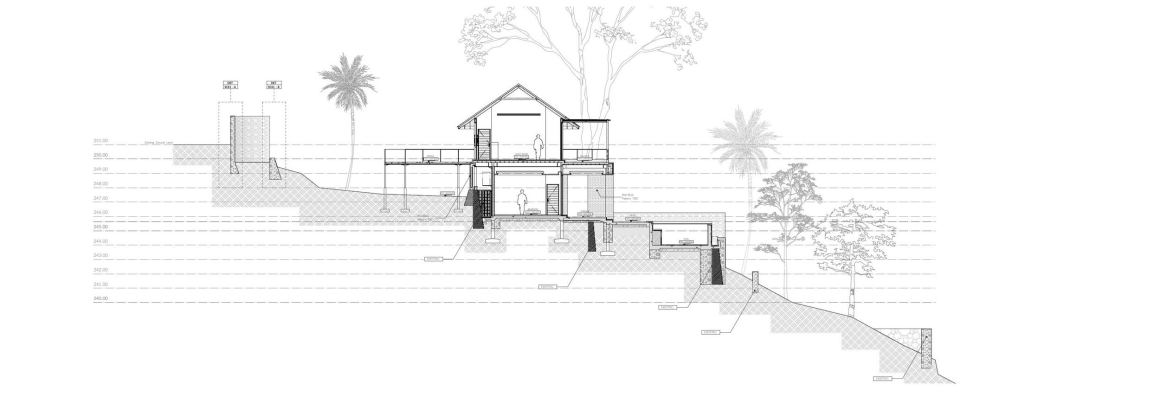


细节很喜欢